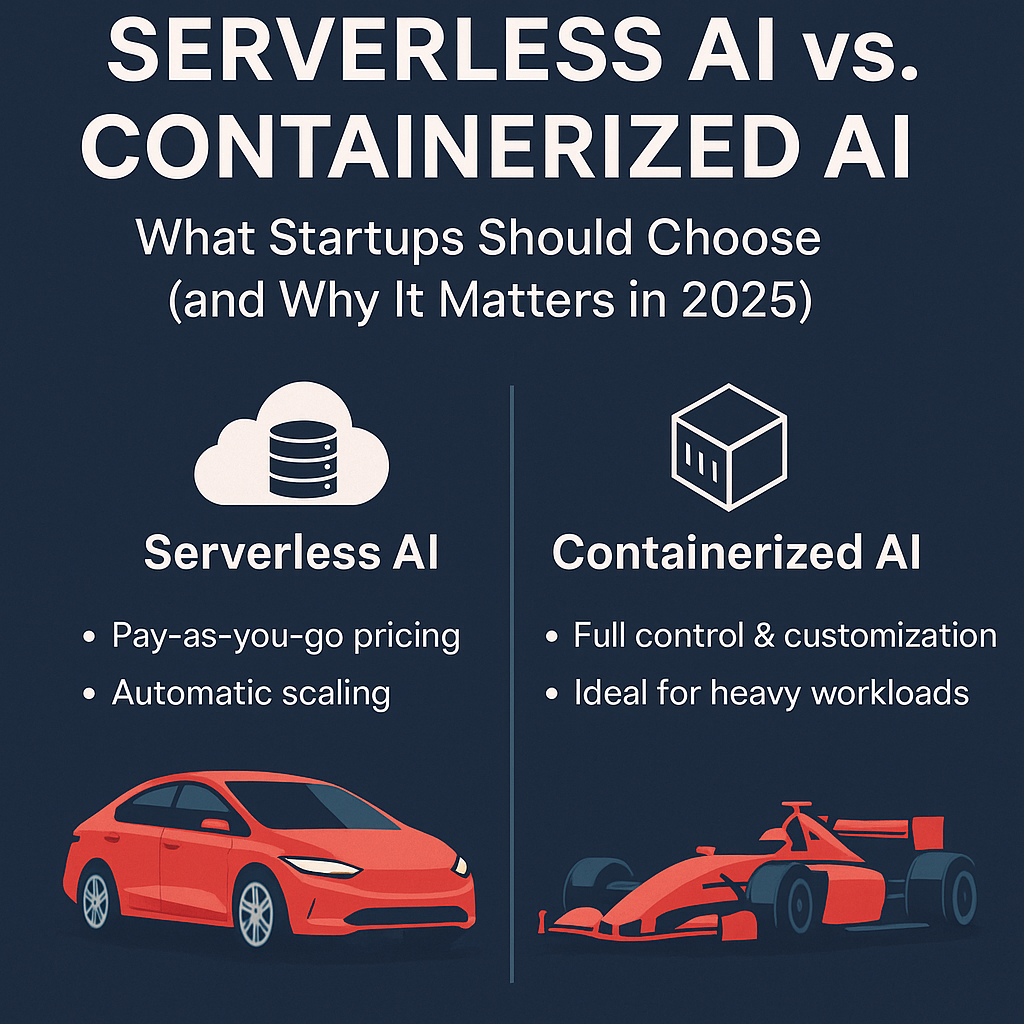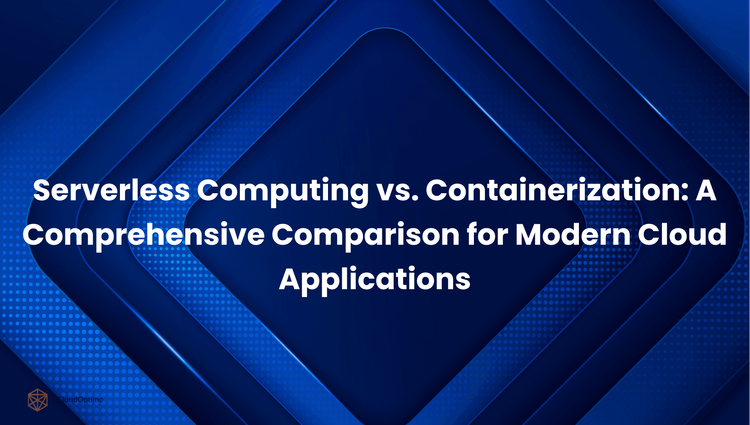Choosing the right infrastructure for your applications can feel overwhelming with so many options available. If you’re wondering whether serverless or containerized workloads are better for your needs, you’re in the right place.
Understanding the difference can transform the way you manage your projects, optimize your resources, and scale your operations. Imagine having the flexibility to deploy your applications effortlessly, while minimizing costs and maximizing efficiency. This article will guide you through the nuances of both serverless and containerized approaches, helping you make informed decisions that align perfectly with your goals.
Let’s dive in and explore which option can unlock the potential of your applications and take your projects to new heights.
Serverless Workloads
Serverless means no servers to manage. Code runs in the cloud. You only pay for the time your code runs. It scales automatically. No need to worry about traffic spikes. Serverless supports multiple languages. It’s flexible for developers.
Serverless can save money. You pay only for what you use. It’s easy to scale up or down. Developers spend less time on infrastructure. They can focus on coding. New features can be added quickly. Serverless allows faster development.
Debugging can be tricky. Logs may not show all errors. Cold starts can slow down performance. Serverless can have latency issues. Vendor lock-in is a risk. Switching providers can be hard. Monitoring is more complex. It needs good tools.

Containerized Workloads
Containerized workloads use software containersto run tasks. Each container holds all it needs to work. This includes code, libraries, and settings. Containers are lightweightand use less memory. They can start and stop quickly. This makes them very efficient.
Containers make moving apps easy. They run the same on any system. This is called portability. They also help in resource efficiency. More apps can run on one server. Containers also support scalability. Add more containers to handle more work.
Containers need tools to manage them. These tools can be complex. They also need good security checks. Containers share the host OS. This may lead to security risks. Users need to be careful.
Performance Considerations
Serverless solutions offer automatic scaling and reduced operational costs, ideal for applications with unpredictable traffic. Containers provide greater control and flexibility, making them suitable for complex architectures requiring consistent performance. Choosing between these depends on workload demands and infrastructure preferences.
Scalability
Serverless architectures scale automatically. Automatic scaling means no need for manual adjustments. More requests? No problem. The system handles it. Containers need manual scaling. This can be tricky. Requires knowledge. Requires time. Serverless saves resources. Serverless saves effort. Both have scalability options. But serverless is easier for many.
Latency And Speed
Serverless can have cold starts. This means a delay at times. A small delay. But noticeable. Containers start faster. Less delay. More immediate. Speed matters in tech. Every second counts. Serverless offers event-driven operations. This can be fast. But depends on the load. Containers offer consistent performance. No surprise delays. Pick based on needs. Pick based on usage.

Cost Implications
Serverless and containers have different pricing models. Serverless is pay-per-use. You pay only for what you use. No idle charges. Containers often have fixed costs. They run continuously. This may lead to more expenses.
Serverless is highly efficient. It scales automatically with demand. This saves resources. Containers give more control. You manage resource allocation. This can be less efficient but more flexible. Choose based on your needs.
Security Aspects
Serverless systems often have built-in security. Providers manage the infrastructure. This can reduce potential threats. But, there are still risks. Developers must focus on secure code. Containers give more control to the user. This means you handle most of the security tasks. Keeping systems updated is vital.
Meeting compliance is crucial. Serverless services automatically update to meet standards. This helps with data protection. Containerized solutions need regular checks. You must ensure they follow rules. Both systems need attention. Always check for new requirements. This keeps your data safe.

Development And Deployment
Serverless platforms are very user-friendly. They handle the server tasks for you. This makes them easier for beginners. Containerized workloads need more setup. You have to manage them yourself. This might be harder for new users.
Serverless offers many tools. These tools help in quick deployment. Developers can choose from many options. The ecosystem keeps growing. Containerized solutions also have tools. But they might be more complex. They need more knowledge to use. Developers need to learn these tools well.
Use Cases
Serverless suits short-lived taskswell. It handles sudden traffic spikes smoothly. Developers love its auto-scalingfeature. No need to manage servers. Costs align with actual usage. Best for event-driven applications. Think chatbots and email processing. Serverless is great for prototypingtoo. Launch fast and adjust easily. Simplifies backend operations. Focus remains on code, not infrastructure.
Containers work best for consistent workloads. They offer a stable environment. Ideal for microservicesarchitecture. Each service runs in its own container. Supports cross-platformcompatibility. Containers are good for legacy applications. They modernize old systems. Also, perfect for applications needing fine-grained control. Security and resource allocation are precise. Containers help in multi-cloudstrategies too. Move easily between clouds.
Future Trends
Emerging Technologiesare shaping serverless and containerized workloads. New tools and platforms are launching every year. These technologies help companies manage their applications better. Automation is becoming more common. Developers use it to save time and reduce errors. The shift to cloud-native applications is growing. Many businesses prefer flexible solutions.
Predictions for Adoptionshow an increase in serverless and containers. More companies are trying these solutions. They offer cost savings and scalability. Small businesses benefit a lot from them. Easier management and setup attract startups. Many experts foresee wider acceptance soon. It helps firms stay competitive and efficient.
Frequently Asked Questions
What Is Serverless Computing?
Serverless computing allows developers to run applications without managing servers. It automatically scales resources based on demand, optimizing costs. This approach simplifies deployment and maintenance, enabling developers to focus on code rather than infrastructure management. Serverless is ideal for applications with unpredictable workloads and short-lived tasks.
How Do Containers Differ From Serverless?
Containers package applications with dependencies, ensuring consistency across environments. They require infrastructure management, unlike serverless, which abstracts this layer. Containers offer greater control and customization but demand more maintenance. Serverless reduces operational overhead, providing automatic scaling and pricing based on usage, ideal for variable workloads.
Are Serverless Solutions Cost-effective?
Serverless solutions can be cost-effective for applications with variable workloads. They charge based on execution time and resources used, reducing idle costs. However, for consistently high-demand applications, containers might be more economical due to predictable pricing models. Evaluating workload patterns helps in choosing the right approach.
Can Containers Be Used With Serverless?
Yes, containers can complement serverless architectures. They provide a consistent environment for applications before deploying them as serverless functions. This hybrid approach enhances flexibility, allowing developers to leverage the strengths of both technologies. Combining them can optimize performance and resource allocation for diverse workloads.
Conclusion
Choosing between serverless and containerized workloads depends on your needs. Serverless offers simplicity and scalability. Ideal for unpredictable traffic. Containers provide more control. Better for complex applications. Evaluate your project’s requirements carefully. Consider costs, scalability, and flexibility. Both have their strengths and limitations.
Serverless is cost-effective for specific use cases. Containers excel in consistent environments. Balancing your priorities will guide your decision. Remember, technology evolves rapidly. Stay informed and adaptable. Make a choice that aligns with your goals. Embrace the future of computing.
Read More:
- Network Automation Tools ROI: Boosting Efficiency & Savings
- Noise‑Cancelling Earbuds Battery Life: Maximize Your Usage
- Ci/Cd Pipeline Tools Comparison: Boost Your DevOps Efficiency
- Vr Content Creation Tools 2025: Revolutionize Your Creations
- Best Gaming PC Build under $1500: Ultimate Performance
- Best Cross‑Platform Mobile Frameworks 2025: Top Picks
- Javascript Frameworks Benchmark 2025: Speed & Performance
- Quantum Cryptography Implementation Challenges: Unveiling Complexities

